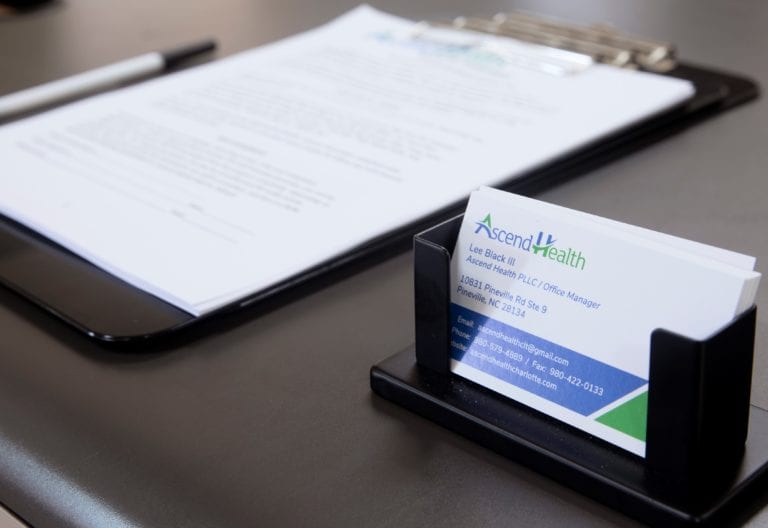When you’re facing both opioid addiction and mental health challenges, Ascend Health’s dual diagnosis MAT program provides the integrated care necessary to support your long-term recovery goals. This medication-assisted treatment approach combines evidence-based pharmacological therapies such as buprenorphine or methadone with targeted behavioral counseling to address co-occurring disorders in a supportive environment. By blending medical management with comprehensive care plans tailored to your unique needs, you can minimize cravings, stabilize your health, and build the coping skills required to sustain sobriety. In this guide, you’ll learn how this specialized outpatient continuum works, its core components, and how it sets you up for lasting recovery.
Understanding dual diagnosis MAT
Defining dual diagnosis
Dual diagnosis refers to the presence of both a substance use disorder and one or more mental health conditions, such as depression, anxiety, bipolar disorder, or PTSD. When these issues occur together, each can exacerbate the other, making recovery more complex. More than 21 million American adults struggle with both mental health and substance use disorders simultaneously, yet only a fraction receive integrated treatment for both conditions [1].
Acknowledging dual diagnosis is crucial because treating addiction without addressing the underlying psychiatric issues often leads to relapse. Conversely, managing mental health alone may leave cravings unaddressed. A coordinated approach ensures that you get holistic care, improving outcomes across the board.
Role of MAT in recovery
Medication-assisted treatment (MAT) is a cornerstone of effective outpatient care for opioid use disorder, particularly when combined with therapies for co-occurring mental health conditions. MAT uses FDA-approved medications—such as buprenorphine, methadone or naltrexone—to:
- Minimize withdrawal symptoms and cravings
- Stabilize brain chemistry
- Improve engagement in counseling
- Support long-term abstinence and relapse prevention
By integrating MAT with psychiatric support and behavioral therapies, Ascend Health’s dual diagnosis MAT program addresses all facets of your recovery. This blended model fosters a supportive environment where medical management and psychological healing work in tandem to build a solid foundation for lasting change.
Key benefits for recovery
Minimizing cravings and withdrawal
One of the most immediate advantages of a dual diagnosis MAT program is its ability to curb intense cravings and ease withdrawal discomfort. Medications like buprenorphine act on opioid receptors to reduce the urge to use, allowing you to focus on therapy rather than acute physical distress. Research shows that pairing pharmacological treatment with behavioral support effectively decreases substance use behavior and improves retention in outpatient care [2].
Addressing co-occurring disorders
In a dual diagnosis MAT setting, clinicians collaborate across disciplines to treat mental health and addiction simultaneously. You might receive:
- Psychiatric evaluations and medication management
- Individual and group therapy sessions
- Skills training for emotion regulation and stress reduction
This integrated approach helps you develop coping strategies for both conditions, reducing the likelihood that untreated mental health symptoms will trigger substance use.
Reducing relapse risk
Relapse prevention is a core focus of dual diagnosis care. By combining MAT with evidence-based therapies—such as cognitive behavioral therapy (CBT) and dialectical behavior therapy (DBT)—you learn to recognize triggers, manage stressors, and apply healthy coping mechanisms. Structured relapse prevention plans and ongoing support equip you with tools to navigate challenges and maintain sobriety over the long term.
Components of the program
Initial assessment process
Your journey begins with a comprehensive intake evaluation by a multidisciplinary team. During this phase, clinicians will:
- Review your medical and psychiatric history
- Screen for co-occurring mental health conditions
- Assess the severity of your opioid use disorder
- Identify social, vocational and legal factors affecting recovery
This thorough assessment informs an individualized treatment plan that aligns with your clinical needs and personal goals.
Medication selection
Based on your assessment, clinicians will recommend the most appropriate medication regimen. Factors influencing the choice include medication history, co-occurring health issues, and lifestyle considerations.
Buprenorphine-based treatments
- Partial opioid agonist that reduces cravings and withdrawal
- Lower overdose risk compared to full agonists
- Available as Sublocade (extended-release injection) or daily Suboxone
- Often paired with counseling in a suboxone maintenance therapy outpatient program
Extended-release injections
- Monthly Sublocade injections provide continuous buprenorphine delivery
- Simplifies dosing and improves adherence
- Covered by many insurance plans [3]
Methadone alternatives
- Full opioid agonist effective for high-severity cases
- Requires daily visits to a licensed clinic
- May be preferred if buprenorphine is not clinically indicated
Medication options are summarized in the table below:
| Medication | Type | Benefits | Administration |
|---|---|---|---|
| Buprenorphine | Partial opioid agonist | Low overdose risk, reduces cravings | Daily sublingual doses (Suboxone) |
| Sublocade | Extended-release buprenorphine | Monthly dosing, improved adherence | Monthly injection |
| Methadone | Full opioid agonist | Effective for severe dependence | Daily clinic dispensing |
| Naltrexone | Opioid antagonist | Blocks opioid effects, non-addictive | Monthly injection or oral tablet |
Behavioral therapies and counseling
Medication alone is not enough to support lasting recovery. Ascend Health integrates various therapeutic modalities, including:
- Individual therapy to explore underlying issues
- Group counseling to build peer support and accountability
- Family therapy to repair relationships and create a supportive home environment
- Skills training for relapse prevention, stress management and emotional regulation
These tailored treatment programs foster insight into both addiction and mental health, laying the groundwork for sustained well-being.
Ongoing monitoring and support
Your progress is continuously evaluated through regular check-ins, toxicology screenings and care team consultations. This active monitoring allows clinicians to adjust medications, refine therapy approaches and respond quickly to any warning signs of relapse. As a result, you receive timely, individualized care that evolves with your recovery journey.
Aftercare and relapse prevention
Outpatient maintenance strategies
After stabilization, you transition into a structured aftercare plan designed to keep you on track. Maintenance may include:
- Continuing buprenorphine or methadone doses
- Scheduled counseling sessions
- Regular support group participation
These elements work together to reinforce healthy routines and prevent setbacks. If you prefer virtual options, you can enroll in a telehealth suboxone maintenance program or telehealth relapse prevention MAT for remote check-ins and therapy.
Telehealth follow-up care
Telehealth extends your access to care, letting you connect with clinicians, counselors and peer support specialists from home. This flexibility is especially valuable if you:
- Live in a rural area
- Have transportation challenges
- Need to balance work or family commitments
Our telehealth opioid treatment with Suboxone platform ensures you stay engaged in recovery without missing critical support sessions [4].
Family and peer support
Recovery thrives in a network of understanding peers and loved ones. Family therapy and peer groups help:
- Improve communication and trust
- Address enabling behaviors or conflicts
- Celebrate milestones and reinforce progress
By involving those closest to you, aftercare creates a nurturing community that bolsters your commitment to sobriety and personal growth.
Choosing the right provider
Insurance coverage considerations
Most health insurance plans cover at least part of MAT, thanks to the Mental Health Parity and Addiction Equity Act of 2008. When evaluating providers, look for programs that accept:
- Medicaid [5]
- Private insurance [6]
- Veterans benefits [7]
Confirm coverage details and out-of-pocket costs before beginning treatment to avoid unexpected expenses.
Flexible and veteran programs
Your lifestyle and background should shape your treatment choice. Some programs offer:
- Evening or weekend appointments
- Veteran-focused support services
- Specialized tracks for first responders or professionals
Ascend Health’s flexible scheduling and veteran-friendly options ensure you can integrate recovery into your daily life.
Location and program access
Convenient access matters. Consider whether you prefer:
- A brick-and-mortar clinic close to home
- A hybrid model combining in-person and virtual care
- A dedicated suboxone outpatient recovery program or outpatient buprenorphine treatment program
Choosing a provider with multiple access points helps you stay consistent in treatment and supportive activities.
Setting goals for success
Creating personalized recovery goals
Clear, achievable goals keep you motivated and focused. Work with your care team to define objectives such as:
- Reducing medication dosage under supervision
- Attending a set number of therapy sessions each month
- Rebuilding work or family relationships
These milestones form the roadmap for your recovery journey.
Building your support network
Surround yourself with people invested in your success. Your network may include:
- Clinicians and therapists
- Peer support groups
- Family members and close friends
Sharing progress with this network creates accountability and encouragement when challenges arise.
Tracking progress and milestones
Regularly review your achievements to stay on course. Use tools like:
- Journals or recovery apps
- Therapy homework assignments
- Feedback from your care team
Celebrating each milestone, no matter how small, reinforces your commitment and highlights the support necessary for lasting recovery.
Next steps to begin MAT
Preparing for intake
To get started, gather relevant information:
- Recent medical records and psychiatric evaluations
- Insurance details and referral forms
- A list of current medications and dosages
Having these items ready accelerates your intake process and helps clinicians tailor your plan quickly.
What to expect during treatment
Once enrolled, you’ll:
- Undergo an in-depth assessment
- Start a medically supervised detox if needed
- Begin medication dosing and counseling sessions
- Attend regular follow-up appointments for adjustments
This structured approach ensures you feel supported at every stage.
Committing to long-term recovery
Recovery is a lifelong journey, and a dual diagnosis MAT program offers the tools and structure you need. By engaging fully in counseling, staying consistent with medication, and leaning on your support network, you set the stage for sustainable growth. If you’re ready to take the next step, explore our aftercare suboxone treatment program or connect with our team to discuss the best path forward. Your goals are within reach when you have the right support—Ascend Health is here to guide you every step of the way.



